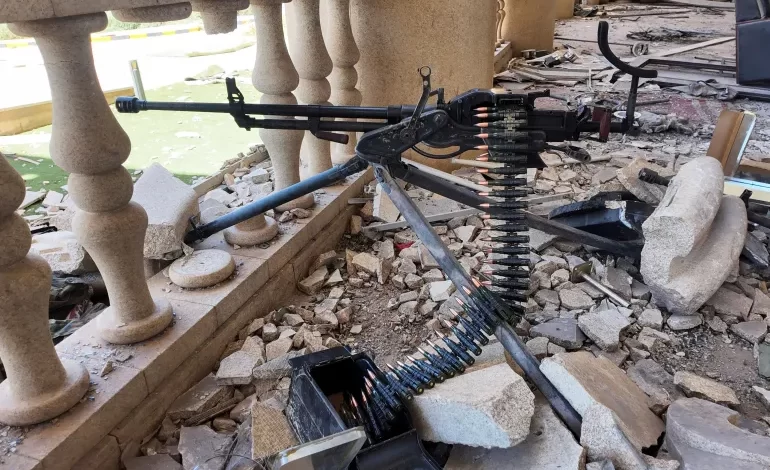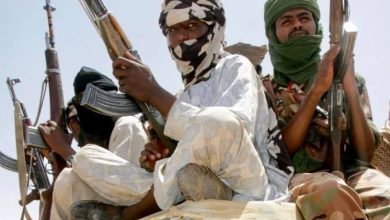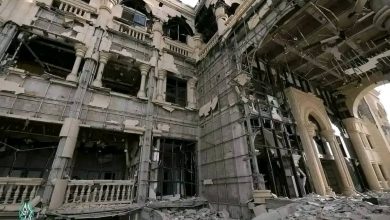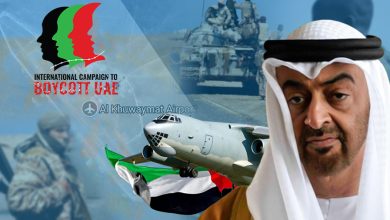What Does the Collapse of the (RSF) in Khartoum Mean? What Comes Next?

By Al-Nour Ahmed Al-Nour
After five days of losing the Republican Palace, the Rapid Support Forces (RSF) have rapidly retreated in Khartoum State, reaching a state of collapse and mass escape from the capital toward western Sudan.
Observers believe that the RSF’s collapse stems from its internal structure, family-based leadership, destruction of its core strength, and failure to achieve its goals. They predict that the RSF will shrink back to the Darfur region and lead an insurgency against the state from there, similar to what armed movements did about 22 years ago.
Recently, the RSF has suffered a series of setbacks, forcing it to withdraw from several areas in Khartoum State after being expelled by the army from the states of Al-Jazirah and Sennar, parts of North Kordofan, northern White Nile State, and southwestern Blue Nile region.
Since last Sunday, RSF elements have begun withdrawing from neighborhoods in the capital, dismantling their positions, and leaving behind weapons and vehicles. The withdrawing forces have faced accusations of widespread human rights violations, including killings, looting, and rape against civilians. The Emergency Lawyers Committee reported such incidents in the Al-Jarif West area in eastern Khartoum.
A Major Military Operation
In a large-scale ground operation last Wednesday, the Sudanese army stormed Khartoum International Airport and regained control of large military and civilian sites in the eastern and southern parts of the capital. This brought the army closer to declaring Khartoum free of RSF presence, which had dominated most of the city since the war broke out nearly two years ago.
TV footage and social media videos documented the RSF’s mass escape across the Jabal Awliya Dam Bridge in southern Khartoum, with some fighters abandoning their vehicles and fleeing on foot after the army’s advance into what was the RSF’s last major stronghold in the capital.
Social media also showed citizens celebrating in southern and eastern Khartoum neighborhoods where the army had taken control. People welcomed the soldiers with chants of “One army, one people,” as joyful ululations were heard and tears of relief were shed after being freed from RSF control. Citizens recounted the suffering they endured, including torture, abuse, and starvation.
Military Gains
Militarily, the army reclaimed control of the Air Defense headquarters, the Chemical Weapons Command, and the National Service headquarters in the Al-Amarat area in south-central Khartoum. It also regained the Yarmouk defense industries complex in southern Khartoum, the Central Reserve Police headquarters, and the First Armored Brigade in Al-Baqir at Khartoum’s southern entrance near Al-Jazirah State.
The army also seized the RSF’s largest military base in the Tayba area in southern Khartoum, which served as a key supply center for weapons, military equipment, and fuel. The base, fortified with underground defenses, was reportedly constructed with the help of foreign experts.
Army spokesman Brigadier General Nabil Abdullah stated that the Tayba camp was the last stronghold of the “Dagalo militia” in central Sudan and Khartoum. He added that the remaining RSF presence in Khartoum consists of isolated pockets that will be eliminated soon.
The army also secured the Soba Bridge, linking eastern and southern Khartoum, and gained control of the western side of the Manshia Bridge, which connects East Nile neighborhoods to central Khartoum.
Heading West
The army also reclaimed residential areas in eastern Khartoum, including Burri, Riyadh, Taif, Arkwit, Maamoura, and Al-Firdous. In southern Khartoum, it secured Al-Sahafa, Jabra, Al-Azhari, and Kalakla in the Jabal Awliya locality near White Nile State. Only a few RSF pockets remain in the Mayo, Salama, and South Belt neighborhoods.
Security and military expert Amer Hassan Abbas attributed the RSF’s rapid collapse in Khartoum to its fragile tribal structure, family-based leadership under the Dagalo clan, and the army’s destruction of its core strength in the capital and the states of Sennar and Al-Jazirah. The loss of command and control eventually led to the RSF’s retreat from the capital.
Abbas expects the RSF to shift its operations to the Darfur and Kordofan regions. He believes the army is capable of confronting the RSF there due to its long experience with insurgencies over decades. However, he warns that foreign backers supplying the RSF with weapons through border routes—including new indications of support from South Sudan—could prolong the conflict.
A New Warfront
With its recovery of strength and control over the state center, the army is now poised to expand westward into Kordofan and Darfur to pursue the RSF in open terrain—a stark contrast to the brutal urban warfare it endured.
Journalist and editor-in-chief of Al-Youm Al-Tali newspaper, Al-Taher Sati, says that after securing Khartoum, the army will move into Kordofan and Darfur. He notes that this effort will be bolstered by the “Hunter” task force, which recently arrived in El-Obeid, the capital of North Kordofan State, along with the Desert Task Force and the Joint Force that recently mobilized from northern Sudan.
According to Sati, Darfur will not be a safe haven for the RSF after its escape from the capital. He predicts that the army, the joint force, and local militias will pursue and expel them from there, just as they were forced out of Khartoum.
Sati also revealed that RSF leader Mohamed Hamdan Dagalo (Hemedti) personally led his forces’ recent operations in Khartoum. He reportedly left the city last Friday night, shortly before the army’s takeover of the Republican Palace. Hemedti was accompanied by his nephew Adel Dagalo, who manages RSF logistics, and Idris Hassan, the RSF commander in Khartoum North. He was later spotted in Hamra Al-Sheikh in North Kordofan before disappearing to an undisclosed location.
A New Strategy
Political analyst Mohamed Alaa Al-Din expects the RSF to shift its focus to expanding operations in Darfur and Kordofan. He believes the RSF will rely on newly acquired drones to target power stations, communication hubs, and government facilities to destabilize security. Alaa Al-Din also predicts that the RSF might resort to sabotage through sleeper cells in stable states to compensate for its losses in the capital and central Sudan.
According to Alaa Al-Din, the RSF will seek to reassert its presence by establishing control over Darfur and setting up its own government, similar to the Libyan model, to strengthen its bargaining position for a political return to Khartoum.



